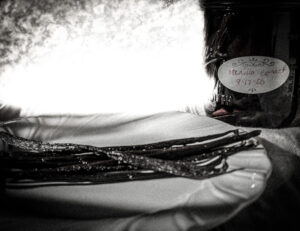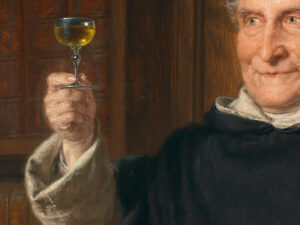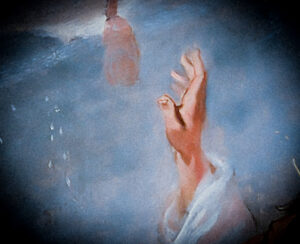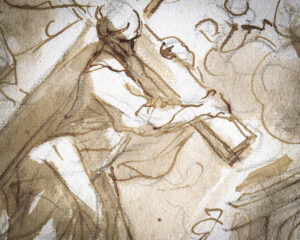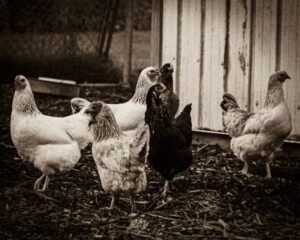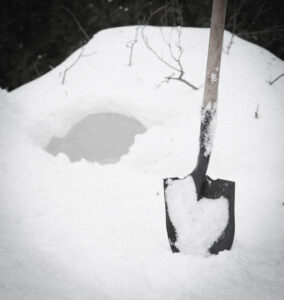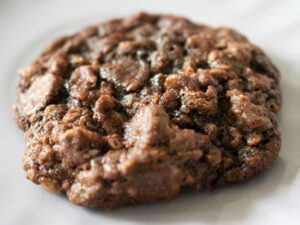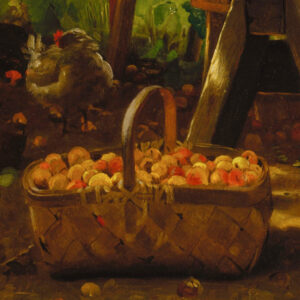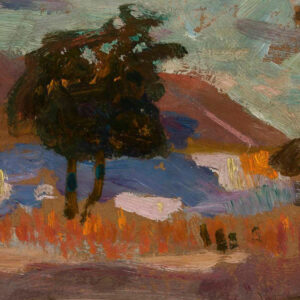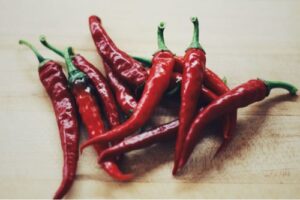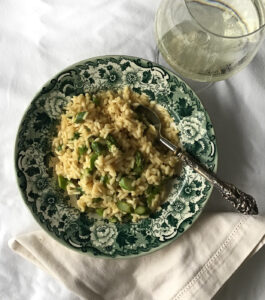Pietà
The Womanly Art of Losing Yourself

Mrs. Carmel Richardson
Have you ever seen Michelangelo’s Pietà? The statue depicting a dead Christ in his mother’s arms is called “Pity,” or “Compassion,” which seems to speak to the emotion we feel upon seeing her holding her slain son across her lap. Compassion for the sinner whose Savior is crucified; compassion for the mother who holds his lifeless body; compassion for the son, flowing from his mother. Pietà, in the form “pietas,” also becomes “piety” in our modern language. The original Latin meant something like “duty,” as in the reverent obedience due true religion, or the womanly duty of bearing and raising children—things done joyfully, and which often come at great cost to the dutiful.
The statue is aptly named: duty and compassion seem to blend perfectly within the forms and folds and faces of mother and Son. While a pietà is a common theme in art, none is as famous as Michelangelo’s. It is said the artist could see the sculpture in the virgin block of marble and only had to chip away what was not Pietà to reveal the final work.
My own mother is a wonderful woman. The words of hers that most stick with me are ones I never heard. It was shortly after my older sister was born that Momma, turning to my father and beaming with all the joy and exhaustion of a woman who has passed through the valley of the shadow of death to bring forth life, said simply, “I want another one.”
I want another one? It is more striking to me this year than ever before. I recently took my own journey through the valley, for my firstborn daughter. After thirty hours in the darkness, when our little light arrived, the only thought on my mind besides “Praise God” was “Never again.” Or at least, “not for a while.” The first child is the hardest, I am told; the body has to be broken in. But even after that initial softening, I cannot imagine the process is ever easy. It is called “labor” for a reason.
My mother did that six times and each, apparently, with more grace than the last. I was there for the birth of my youngest sister, whose passage into the world was so smooth that my mother drove herself to the hospital before she realized that her body was, indeed, laboring. That’s about the closest thing to an easy delivery I’ve heard of, and it was her last. I guess it just takes a long time to become soft. It took two years for Michelangelo and the block of marble.
Before my own journey into motherhood, I recall hearing some older women complain about how motherhood had changed them. It’s been fifteen years since I’ve had a minute to myself. I can’t even take a vacation without thinking about my kids the entire time. Now that the house is empty, I don’t know what to do with myself. There’s a fear there, which even unmarried twenty-somethings have thought about, of what happens after motherhood. After the brood has flown, will the mother not be left, broken down and tired, a shadow of her former self? We all know she can’t return to cocktail dresses and girls’ weekends—and if she does, she is only grasping after something that is no longer there. If she gives all of herself to her children for a good quarter or more of her life (the prime of it, too), what becomes of her when they are gone? We fear losing ourselves entirely in the task.
Raising a child requires a large measure of self-sacrifice, we know. And when we hear of the mother of twelve, who has spent more years giving of herself to children than she ever spent caring for herself, we might wonder why she did it. Wouldn’t two or three have been enough? Then she could have had a career as well. Twelve, or even six, seems exorbitant — an abundant, unnecessary excess. And isn’t it a good thing for her to take time for herself, to cultivate those old habits and loves that defined her before she had children?
Wouldn’t two or three have been enough? Then she could have had a career as well. Twelve, or even six, seems exorbitant — an abundant, unnecessary excess.
Pregnancy and labor are hard work, the hardest I have ever borne. And, as I am reminded every time my daughter crosses another threshold and enters a new season, they are only the introductory lines of a long, challenging story. What they tell you about motherhood has, so far, been true: every presupposition you bring into it is there almost exclusively for the purpose of being chipped away. Dreams of order and predictability are met rarely, if ever. You reach your limit and discover there that children have no concept of limits, so you have to sink the chisel even deeper, carve off another chunk of your former self.
The chipping away of the old self is not merely mental, of course. It involves a very physical surrender of the body.
An acquaintance from high school recently told me she always wondered why women were in such a rush to destroy their bodies with childbearing. It’s a fair question. There’s no debating that, no matter how you try, you will not look the same after pregnancy as you did before. Skin stretches. Hips widen. To the young mother, the question often posed is “Why now?” Which is to say, “You may have twenty-odd years of childbearing ahead of you, but once you cross that threshold, there is no return.” Youth, both physical and psychological, is abruptly ended.
Is it cut short? I think of former generations of women, and of Mary, mother of Jesus, and it seems to me that I remained in youth much longer than they. And too, there comes a time in life when a lack of cares is its own sort of burden, and the burden of children a thrilling, if daunting, task. The body’s decay is inevitable, but children are not. Why linger before the threshold of joy? For myself, at least, I wanted more from life than to write about it. No worldly success can compare with the moment your child first smiles at you, or laughs to hear your voice. No jeans size is worth foregoing the triumphant caterwaul at the moment of birth. The greater the sacrifice, the greater the reward.
It hurts to lose these physical features; our vanity is bruised. But if there is anything worth keeping in modern self-love culture, it is that becoming a woman means knowing you are more than just a body, and your beauty is made richer by your embrace of reality—stretch marks and all.
* * *
Well good for you, you are thinking. Motherhood has made you pious, in the firm-browed, pinch-lipped, Victorian sort of way. It is likely true of me, because I am only at the beginning of motherhood. Of other women, the same cannot be said.
A friend of mine has five sons and a daughter and is still in the prime of her life. She is the epitome of the woman who has surrendered her whole self to love her family. She has interests, all kinds of them, but somehow they all wrap themselves back around the task of raising good men, and now a good woman. Unbelievably patient with herself and others, this mother is constantly bending her desires to the ever-shifting landscape that is her day. Her body is surely changed by her vocation. And yet, she is beautiful, in no small part because she is so joyful. No doubt her temperament lends her to this; some are more naturally suited to motherhood, while the rest of us have to work at it. Still, it is inspiring to see her laugh at a change of plans—not in spite, but with true humor.
My mother, whose nest is now all but empty, is a portrait of this work at its completion. She is soft and gentle, yet her faith is impossible to shake. As though raising six children wasn’t enough, she cannot seem to stop giving of herself—teaching science to high schoolers and counseling their mothers along the way. She is helping me, too, as I learn the ropes of the job. Hers is, as ever, a vocation that requires much and pays little. But she loves it. Having been under the carving pick herself, she has compassion for those whose chipping is just beginning. She emptied herself of much to get here: a lucrative hospital job, and, for many years, time to pursue the hobbies she loves, such as gardening and reading for pleasure. She relinquished the appearance of worldly success for a dutiful work, but she will be the first to tell you what joy that duty was, and how she loved it. Now, surrounded by six adult children, two sons-in-law, and a granddaughter, her body bearing the marks of the chisel, her face shines with glory.
This is the joy we are getting at when we surrender ourselves to the task, allow it to empty us even. This is the compassionate duty, the pietas, that lies beneath the clean marble lines of youth.
This is the joy we are getting at when we surrender ourselves to the task, allow it to empty us even. This is the compassionate duty, the pietas, that lies beneath the clean marble lines of youth. It is like the draped fabric of the virgin mother’s garb, and more beautiful to look at for its manifold depth. It only emerges after much of our former selves has been cleared away.
The question I have had to face, then, has not been “How do I retain my old self amidst these?” but “How can I shed these layers faster?” I am learning, albeit slowly, that at least for me, the old self which is being crucified is not as glorious as I once thought. How tenuous my sense of self, how fragile my temperament! It was dependent on variables that were not, as I once believed, fixed. It is becoming stronger with each piece painfully chipped away. But the pieces that are removed are those which were deformed; I hope what is beneath is half as pious as my mother and my friend — and the woman in the statue.
The slain body across her lap is of one who displayed a greater piety still. His was an impossibly painful duty, performed with all the joy of true obedience. His was the greatest self-emptying, of blood poured in abundant, unnecessary excess.
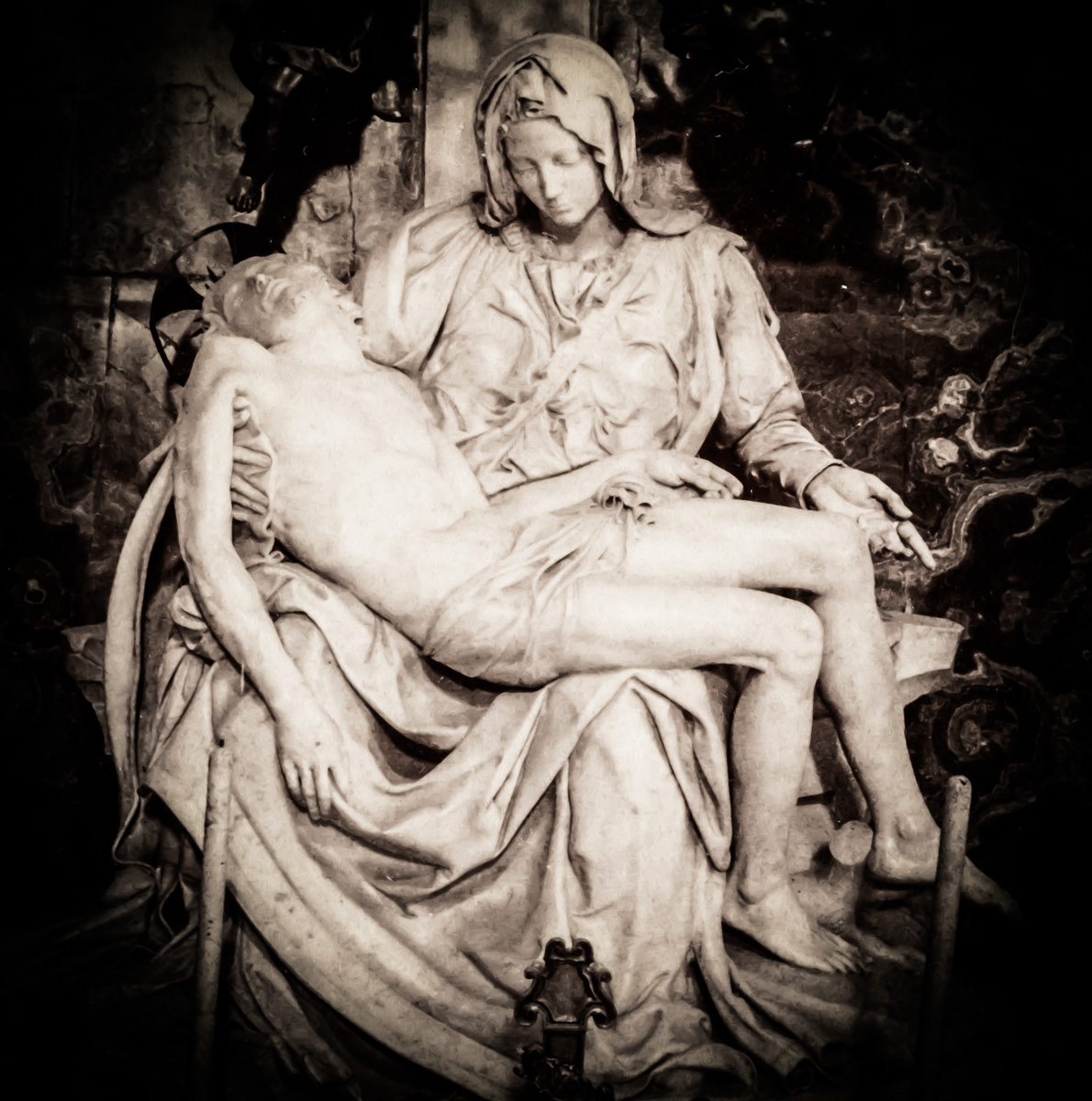
(Photograph: Underwood & Underwood. 1897.)



